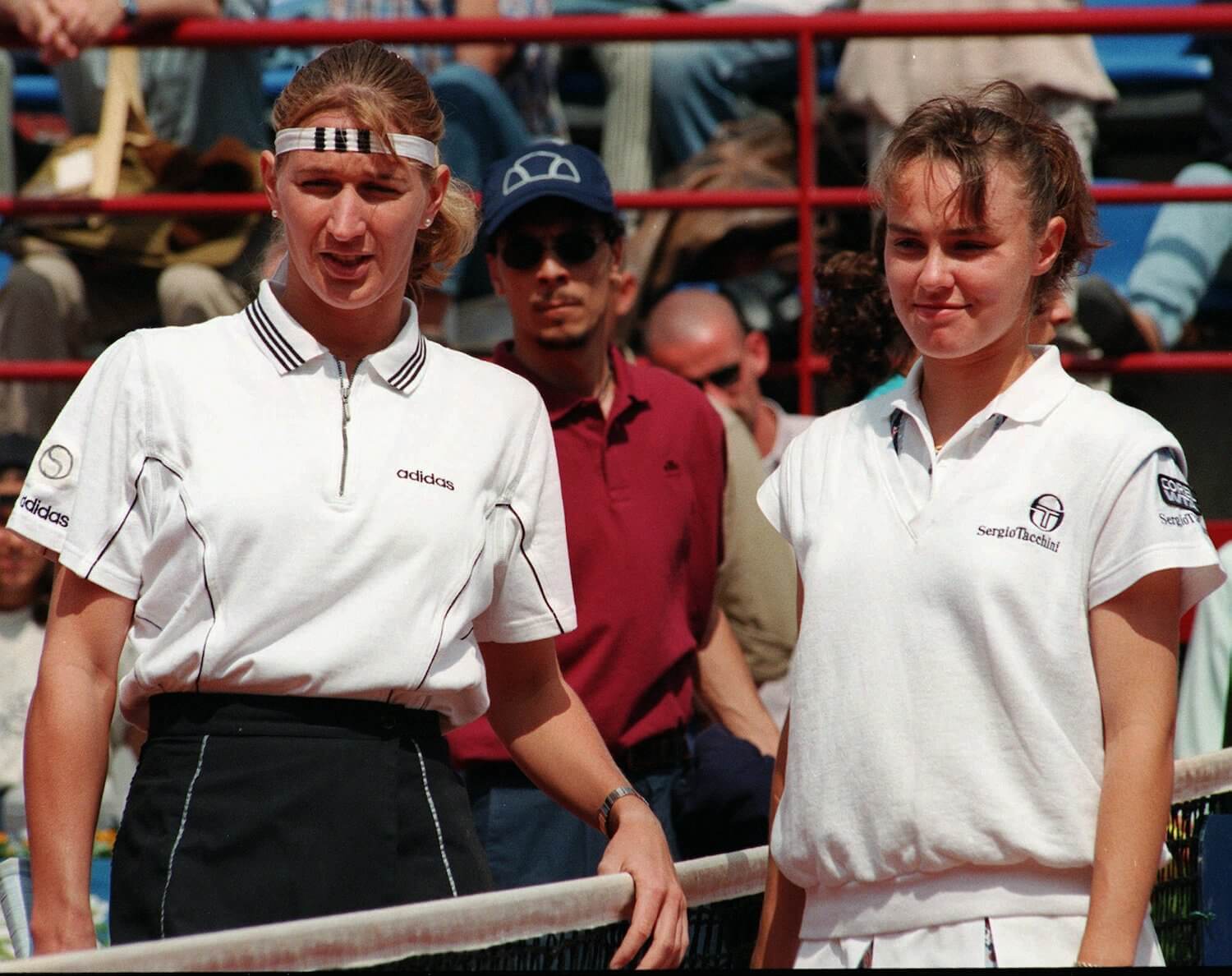
In the world of tennis, rivalries and controversies often define the narrative of the sport. One of the most talked-about incidents occurred during the 1999 French Open final, where Swiss tennis star Martina Hingis faced off against German legend Steffi Graf. The match, which would become infamous for more than just the scoreline, saw Hingis employ an underhand serve that sparked outrage and criticism from many, including tennis icon Martina Navratilova.
The Build-Up to the Final
The 1999 French Open final was highly anticipated, pitting two of the game’s best against each other. Martina Hingis, then just 18 years old, had already made a significant impact on the WTA Tour, having won three Grand Slam titles and achieving the world No. 1 ranking. Steffi Graf, on the other hand, was a seasoned veteran, a former world No. 1, and a multiple Grand Slam champion herself, known for her powerful forehand and competitive spirit.
As the match approached, the atmosphere was electric. Fans from around the world tuned in to witness what was expected to be a classic showdown between youth and experience. Hingis entered the match with confidence, having defeated Graf in their previous encounters, but Graf was determined to reclaim her place at the top of the game.
The Controversial Moment
The match unfolded with intense rallies and high stakes, but it was Hingis’s use of an underhand serve that would steal the headlines. In a moment that many deemed disrespectful, Hingis executed the serve during a crucial point in the match, catching Graf off guard. While some praised her creativity and tactical acumen, others, including Navratilova, viewed it as a blatant show of disrespect towards Graf.
Navratilova, who had long been an advocate for sportsmanship and respect in tennis, did not hold back in her criticism. “What Hingis did was show off to the crowd,” she remarked after the match. “It was disrespectful to Steffi. She went too far. You don’t pull that kind of stunt in a Grand Slam final against a champion like Graf.”
The reaction to Hingis’s serve was swift and polarized. Fans and commentators debated whether it was a clever tactic or a sign of arrogance. The incident highlighted the fine line athletes walk between confidence and disrespect, especially in high-stakes matches.
The Match Outcome
Despite the controversy, Hingis went on to win the match, defeating Graf in straight sets, 6-4, 6-2. The victory marked Hingis’s fourth Grand Slam title and solidified her status as one of the sport’s rising stars. However, the underhand serve incident overshadowed her achievement, and the discussion surrounding it continued long after the match concluded.
Hingis’s victory was celebrated by many, but the manner in which she won left a bitter taste for some, particularly Graf’s supporters. Graf, known for her sportsmanship and grace on and off the court, was gracious in defeat but could not escape the scrutiny that followed the match.
The Aftermath
In the weeks following the final, the tennis community remained divided over Hingis’s actions. While some praised her innovative approach to the game, others echoed Navratilova’s sentiments, arguing that respect for opponents should always take precedence over showmanship.
Hingis, for her part, defended her decision to use the underhand serve, stating, “I play to win, and sometimes you have to take risks. It was a tactical choice, and it worked.” However, she also acknowledged the criticism, saying, “I understand that not everyone will agree with my style of play, but I believe in being true to myself on the court.”
Navratilova’s Continued Critique
Navratilova’s critique did not end with the final. In subsequent interviews, she elaborated on her views regarding sportsmanship in tennis. “Tennis is a game of respect,” she stated. “We have to honor our opponents and the history of the sport. What Hingis did was a departure from that tradition.”
The debate surrounding Hingis’s underhand serve and Navratilova’s comments sparked broader discussions about the evolution of tennis and the role of sportsmanship in the modern game. As the sport has grown more competitive, the lines between strategy and respect have often blurred, leading to heated discussions among players, fans, and analysts alike.
The Legacy of the 1999 French Open Final
The 1999 French Open final remains a significant moment in tennis history, not only for Hingis’s victory but also for the controversies that followed. It served as a reminder of the complexities of competition, where athletic prowess and personal conduct are constantly scrutinized.
Hingis would go on to have a successful career, winning multiple Grand Slam titles and becoming one of the most celebrated players in tennis history. However, the incident at the French Open has often been referenced in discussions about her legacy, illustrating how a single moment can shape public perception.
The clash between Martina Hingis and Steffi Graf in the 1999 French Open final is a testament to the passion and intensity of professional tennis. While Hingis’s underhand serve may have been a tactical decision, it sparked a debate about respect and sportsmanship that continues to resonate in the sport today.
Martina Navratilova’s critique of Hingis serves as a reminder that respect for opponents is a cornerstone of athletic competition. As tennis continues to evolve, the lessons learned from this iconic match remain relevant, urging players to balance their competitive instincts with the values that define the sport.
In the end, the 1999 French Open final was more than just a match; it was a defining moment that encapsulated the spirit of tennis, highlighting the importance of respect, rivalry, and the pursuit of greatness.
Leave a Reply